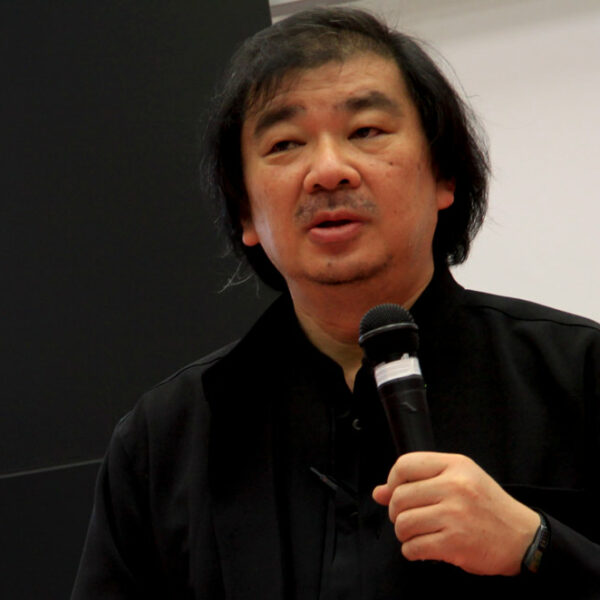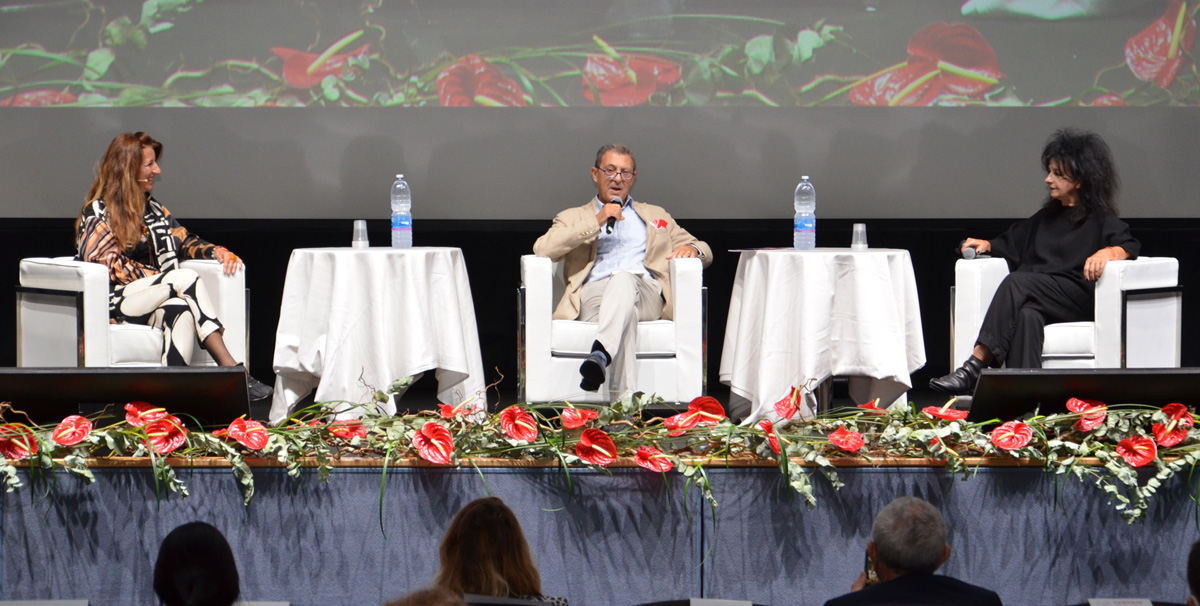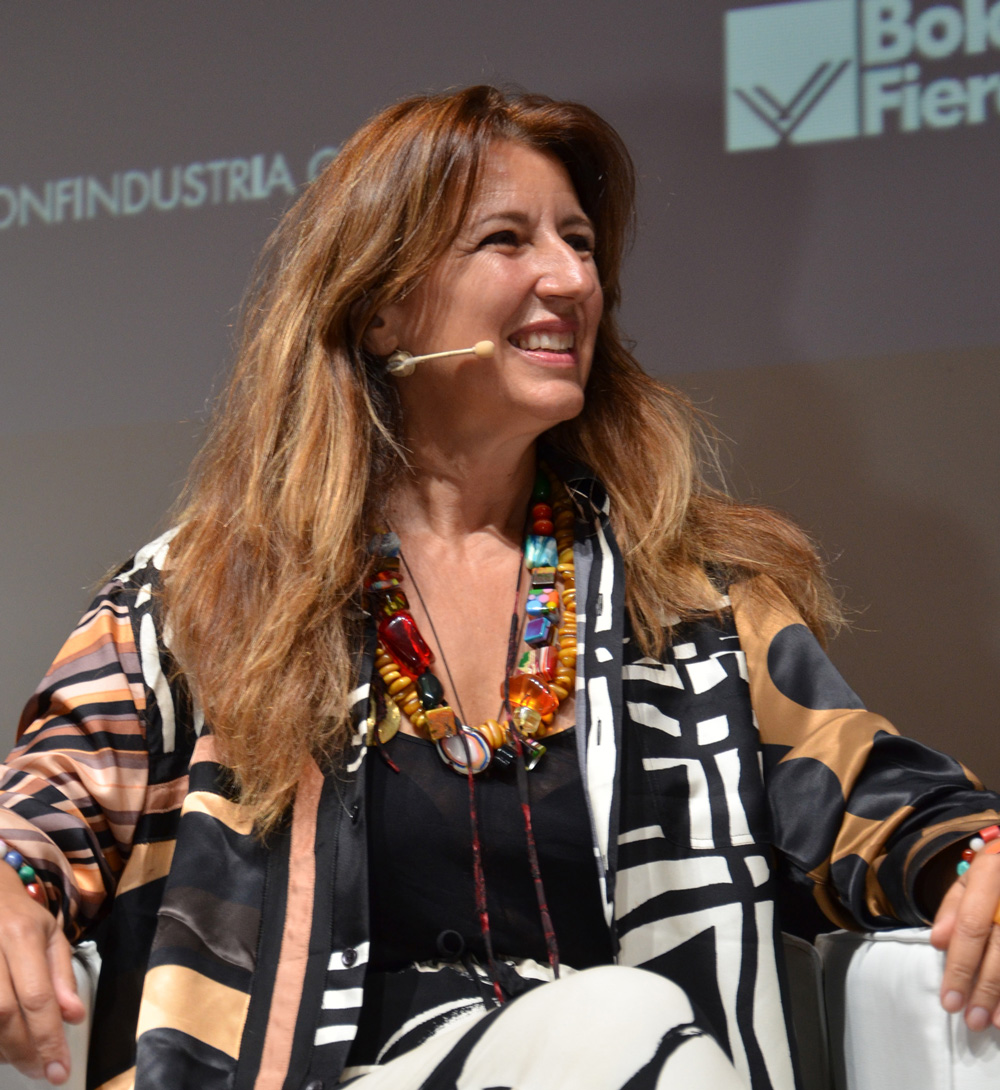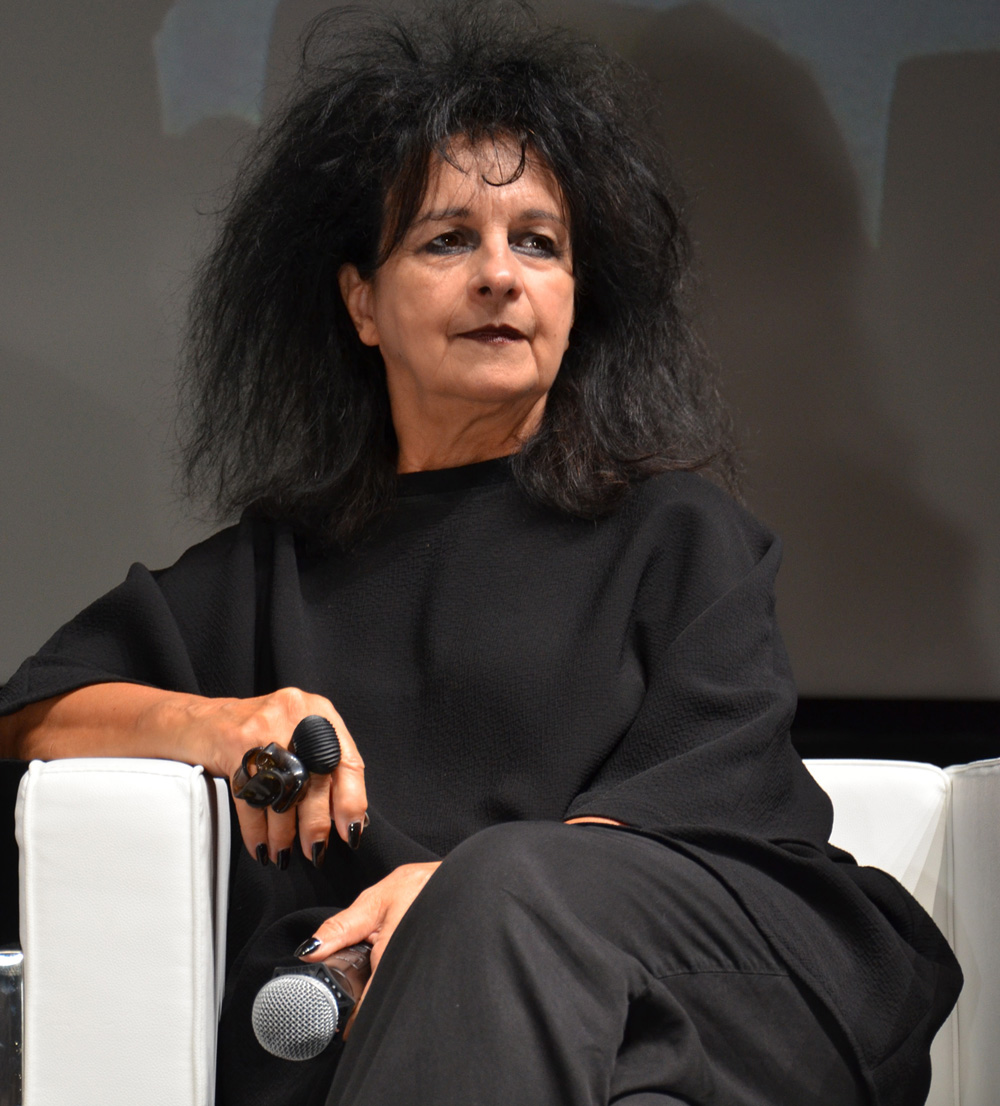Events


The sensitive architecture of Odile Decq and Benedetta Tagliabue | by Simone Ricci
Article published in: "A sensitive, sustainable architecture that looks to ceramics"
The conference “Sensitive Architecture” held this morning as part of Cersaie’s “building, dwelling, thinking” cultural programme featured the participation of two internationally renowned architects, Odile Decq and Benedetta Tagliabue, and was moderated by architecture historian Professor Fulvio Irace.
The conference explored the theme of female sensibility in architectural design and the importance of the tactile and sensorial aspects of architecture, from colours to symbols and light. Materials also play a fundamental role due to their ability to communicate with the senses.
“Ceramic is a wonderful material that connects a building with the history of its location and its traditions,” said Benedetta Tagliabue. “It is also a healthy material that has the healing power of beauty.” In her talk, Benedetta Tagliabue described the way she used ceramics in three major projects, starting with the Santa Caterina Market in Barcelona, where the entire roof was created from ceramic hexagons in over 60 different colours in a design reminiscent of a fruit salad.
In the parish complex on the outskirts of Ferrara, inspired by the shape of a hot-air balloon, she made extensive use of clay brick for the exterior façades together with ceramic tiles designed by the artist Enzo Cucchi to clad the sacred symbols in the interior.
Finally, alongside the new Hospital de Sant Pau i de la Santa Creu, also in Barcelona, she designed a building that would serve as a leisure and relaxation centre for the hospital’s patients. The bricks convey a sense of warmth and protection, while the ceramic tiles covering the roof of the building create the impression of a large garden.
“Architecture is a predominantly male world, but it is simply not true that we women are more sensitive than men,” said Odile Decqin her talk. “I am an expert in the use of black, but I also employ many other colours in my work.”
The common thread running through the numerous projects described by Odile Decq is the interplay of colours and light, whether for large-scale projects or small design objects such as door handles, sofas, lamps or even an experimental dog house. Practicality and ease of use are essential when designing an architectural element. The building becomes landscape and vice versa. Lighting plays a crucial role, whether direct or indirect. When playing with colour, too much is never enough. So in Odile Decq’s projects, entire rooms are coloured and she even uses multiple colours within the same space.
The bathroom is the ideal room for experimentation in architecture: light and shadows are multiplied and force us to explore the space to discover its hidden limits.
Ceramic is an extraordinary material that allows us to work on sensory perception and stability, even in the case of thin products.
Read the interview with Odile Decq “Creativity beyond habit”
October 2021
Other articles published in A sensitive, sustainable architecture that looks to ceramics

From Japan to Cersaie, the first in-person lecture by Shigeru Ban
The International Ceramic Tile and Bathroom Furnishings Exhibition Cersaie has maintained its focus on the world’s great architecture with the keynote lecture given by Pritzker Prize Laureate Shigeru Ban






